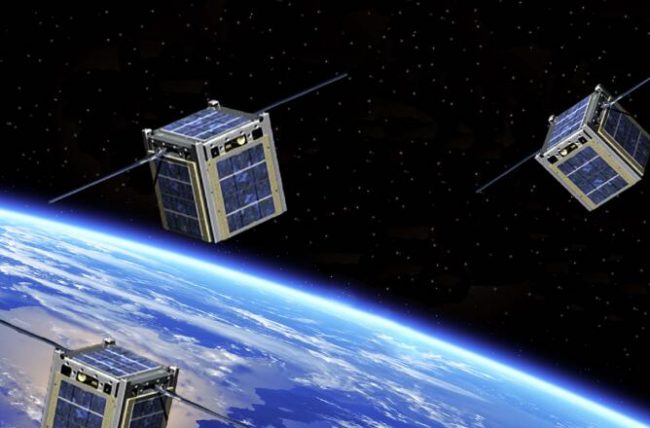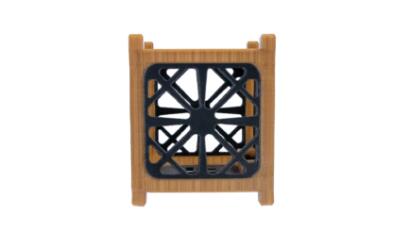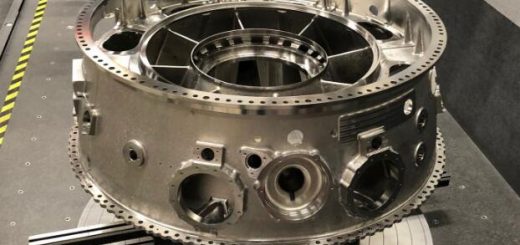The INTAMSYS FUNMAT PRO 410 Helps Build Mini-Satellites
Humans have always looked up at the stars, and their curiosity and observation of the universe and space have never stopped. Nowadays, aerospace technology is developing rapidly, from the “a big step for mankind” to SpaceX Dragon spacecraft successfully docking with the International Space Station. At the same time, commercial companies in the aerospace sector have risen rapidly, including low-Earth orbit and deep-space exploration, which are no longer the only areas where government guidance is involved. Product competition, cost control, and profit-seeking have become important features of commercial aerospace. These features made the use of 3D printing possible, as well as other faster, more convenient, and cheaper engineering manufacturing technologies.
 SpaceX Dragon Spaceship successfully docked with the ISS (International Space Station)
SpaceX Dragon Spaceship successfully docked with the ISS (International Space Station)
In the field of aerospace, satellites are commonly seen as giant objects which require a complex and long manufacturing process and millions of dollars. However the emergence of small cube satellites is breaking this routine, as they are more convenient, more efficient and easier to operate. The lower production cost, the low launch cost and the short production cycle are also pushing the industry toward those smaller models.
The CubeSat is a standard cube module used for simple space observation and atmospheric measurement. It is equipped with rockets for launch and has no independent propulsion system. The surface is usually covered with solar panels. This greatly contributed to the adoption, iteration and development of the CubeSat technology. Using the CubeSat technology, it is possible to verify the rapid on-orbit, observe the earth, and carry out asteroid exploration. Additive manufacturing can accelerate the production cycle, further reduce the manufacturing cost, and give the cube satellite R&D team more design freedom.
 Cube satellite conceptual model
Cube satellite conceptual model
In recent years, the European Space Agency has launched the QB50 program for the detection of atmospheric low-temperature layers. The mission objective of QB50 is described as a “demonstration and verification of a 50-cube satellites network developed by a global university team, launched by a low-cost carrier rocket, to complete a first-class scientific mission to detect low-temperature atmospheric layers at an altitude of 200-380 kilometers.” Due to the short lifetime of satellites in orbit, if the existing spacecraft development test procedures and specifications are used to develop 50 traditional satellites, the cost is extremely high, and the project is not financially feasible. Therefore, a low-cost alternative must be effectively carried out. 3D printed cube satellites can effectively break through this bottleneck, enabling the QB50 plan to move forward.
A Chinese aerospace research institute recently used the INTAMSYS FUNMAT PRO 410, a high-performance dual-nozzle 3D printing equipment, to print cube satellites for related scientific research experiments. The printed cube satellites were made of two different INTAMSYS PEEK materials. The printed samples have passed the preliminary scientific research test, and the next step will be to conduct tests in a simulated environment according to the institute follow-up plan.
 PEEK Cube-Satellite
PEEK Cube-Satellite
One of the researchers of the institute said: “the INTAMSYS FUNMAT PRO 410 can print high-performance materials such as PEEK. PEEK material has an excellent radiation resistance, space suitability for high and low temperature environments, and extremely low vacuum outgassing performance. This ensures the safety and reliability of materials and structures in space, and makes possible a wide range of aerospace application prospects. And the intelligent dual nozzles of the FUNMAT PRO 410 have the ability to print high-temperature materials, which has greatly increased our design possibilities and has shortened the cycle of our research and development.
The application of 3D printing technology and the INTAMSYS FUNMAT PRO 410 3D printer greatly accelerated the development process of the CubeSat, and gave the research and development personnel great freedom and imagination space, which was unimaginable in the past. In addition to the main 3D printed body of the cubes, there will also be internal electrical circuits. The instrument, circuit board and solar panel only need to be inserted to complete the finished product. The cube satellite structure with its double PEEK material, is stable, and further testing will be carried out. Later, specific scenarios of mechanics and electromagnetics will be tested as well.”
The INTAMSYS 3D printing technology not only gives researchers more creative freedom, but also saves a lot of human and material costs for the research institution. In the past, Cube satellite frames were usually built by the traditional sheet metal processing technology, which requires molds, and as we all know molds can be extremely costly. It would usually take several weeks or sometimes even months to have the piece ready. For research institutes and their R&D and small batch production needs, the cost was too high and the waiting time too long. The traditional production method can seriously drags down the progress of scientific research. The advantages 3D printing offers are clearly more in line with the needs of such customers. Users do not need to build the mold, they can directly use the 3D printing equipment to print immediately after designing the file, which saves a lot of time and cost, and accelerates the process of structural design optimization and product iteration.
The exploration of the 3D printing technology applied to the aerospace, such as with this CubeSat research, will inevitably lead to more “made in space” research in the space environment (weightlessness and vacuum environment).
![]() FUNMAT PRO 410
FUNMAT PRO 410
The FUNMAT PRO 410 is an industrial-grade intelligent dual-nozzle high-temperature 3D printer, which can 3D print high-performance materials and engineering plastics:
1. Intelligent dual nozzles, both of which have the ability to print high-temperature materials, with water-soluble support materials;
2. Advanced thermal design, the temperature of the nozzle can reach 500℃, the platform can reach 160℃, and the constant chamber temperature can reach 90℃;
3. Open system printing capabilities, covering high-performance materials and engineering plastics, can print any brand of filaments;
4. A variety of smart features, including liquid cooling system, hot drying silo, filament absence warning and other functions.
Source: Intamsys
For press release, welcome to send to 3D Science Valley at 2509957133@qq.com




Recent Comments